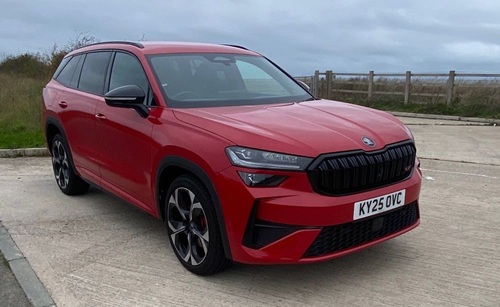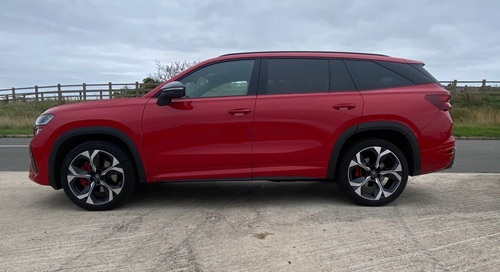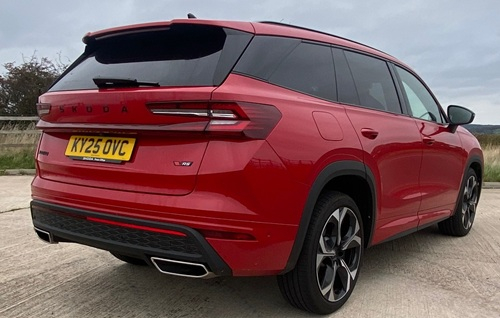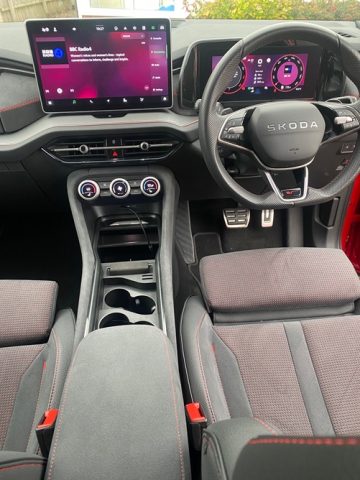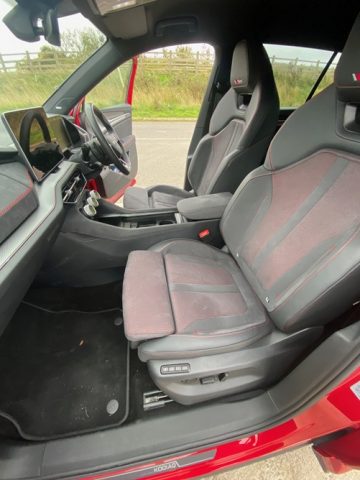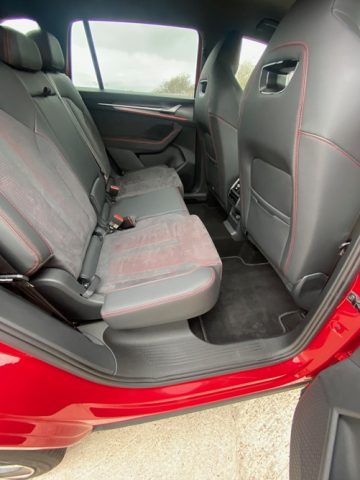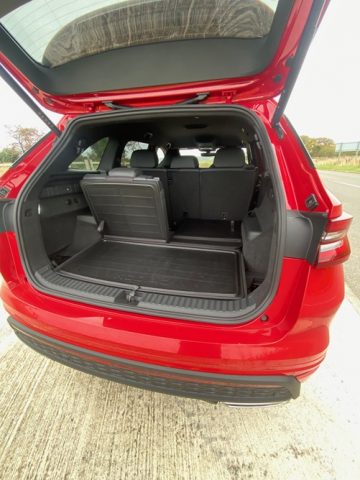Making the right car at the right time is an objective all manufacturers aim to achieve but do not always reach and the 21st century has been decades of decisions and, generally, success for Skoda.
After producing some of the ropiest cars sold across Europe in second half of the 20th century, Skoda became part of the massive Volkswagen Group in 1991 and their models and fortunes dramatically changed.
Once the bargain brand of VW which reworked previous models as they were superseded, the current Skoda line up is, in fact, a parallel range utilising the Group’s enormous engineering resources to manufacture its versions of current VWs.
This cautious yet sensible approach has been a success and the Kodiaq Generation Two SUV range now on the roads is one of their best for families, although prices have moved up since the first series but so has their equipment and specifications, so it’s not unjustified. On the road prices range from £39,025 to £54,575 with petrol and diesel engine options and five or seven seat options depending on the version chosen.
Using the highly versatile MQB platform designed by VW engineers for all Group models, the Kodiaq also adds a bit of its famous motor sport heritage and introduced the vRS model, which we have tested.
So it comes as little surprise that the Kodiaq vRS is a bit special as well as being a bit pricier than its stablemates.
The 2.0 petrol 261bhp 7-speed auto AWD drivetrain is a big lift up from the first generation and it helps if carrying five or more people, but its not particularly economical, just effective and enjoyable with good acceleration from rest, strong pulling power when overtaking and a long legged ability for cross country trips.
The highly refined and developed automatic gearbox was unhesitating in changes, very smooth and quiet and matched to an intelligent four-wheel-drive system for reassuring grip and handling in any weather aided by six different modes selectable by the driver along with a multiple individual mode to further refine responses.
It sits on well-sorted suspension but is not the quietest system and mechanical and tyres noises pervade. It was slightly firm but very comfortable.
The result is able if not agile handling but good predictable roadholding and this is surely what the majority of family users want.
Acceleration was very respectable and came with a throaty light bellow from the exhaust as the car settled down to propel occupants along. Mid-range push was good with 273lbft of torque over a reasonable rev range and it was quiet at the legal maximum.
I was a bit disappointed by the overall fuel consumption but it comes in at almost 2.0 tonnes and that drivetrain must sap some economy unless driving at a steady modest motorway speed and in fairness we did see it return in the high forties on one journey.
Underfoot, the brakes did a great job at quickly and undramatically slowing the car in normal driving but the in-built Driver Assist Safety System was too sensitive for my liking and on a few occasions in traffic approaching roundabouts it suddenly and alarmingly came on very hard for no apparent reason and I don’t think there is a level of adjustment to reduce it, so be prepared.
Reversing produced a similar response on a couple of occasions and I felt this is a feature of the DASS which really needs further work by the engineers. Other aspects including the overtaking and lane alerts worked well.
The steering seemed well weighted for town or country driving but definitely biased towards insulating rather than involving the driver.
All cars are increasing in size and the latest Kodiaq not only fills but overhangs most parking boxes so may be too large for some older garages and it’s not the easiest to place with large blindspots over the shoulder and you must rely on the sensitive parking sensors.
The seats split 50:50 in the third row, were 40:20:40 in the second with a drop down armrest and access was easy to all but the last pair when it would be more of an adventure for the kids.
With all seats used, the loadspace was tight for anything more than a few shopping bags or small case but quickly and gradually extended to produce a massive capacity if two-up.
Space was also at a premium with the secondary controls grouped infront of and around the driver, all well set out and easy to use, just a lot of them on the wheelspokes, stalks, fascia and console/ infortainment display.
Dials and touchscreen were big and very clear, quickly changed with selected modes and features and did not suffer from reflections but very quickly showed up finger-marks.
Heating and ventilation were straightforward, well marked, quick to use and easily filled the cabin, supported by powered windows all round. Those behind had their own temperature controls as well.
With big door mirrors and windows the side and forward sight lines were clear and the lights were powerful but possibly a bit slow responding for my liking. The heating system also soon demisted the glass.
The Skoda Kodiaq vRS family sized SUV is a striking looking model packed with technology which needs familiarisation to really appreciate, a powertrain which is highly refined and which neatly fills the role of a versatile family car with a whiff of sportiness.
Who said family motoring cannot be fun?
FAST FACTS
Model: Skoda Kodiaq vRS 7-seat SUV
Price: £54,575
Mechanical: 261bhp 4cyl 2.0 petrol, 7sp DSG, 4WD
Max Speed: 143mph
0-62mph: 6.4sec
Combined MPG: 34
Insurance Group: 31
CO2 emissions: 190gkm
Bik rating: 37%,£2,190FY, £620SRx5-years
Warranty: 3yrs/ 60,000 miles
Rating: 4.5/ 5
Size: L4.77m, W1.87m, H1.69m
Bootspace: 304 to 2035 litres
Kerbweight: 1903kg
For: Very roomy and versatile, highly equipped, comfortable seats, surefooted handling, good performance, sophisticated family car for seven
Against: Highly sensitive safety assist features, tyre and road noises, restricted rear visibility, thirsty powertrain, high tax costs, ungenerous warranty. By Robin Roberts Miles Better News agency
